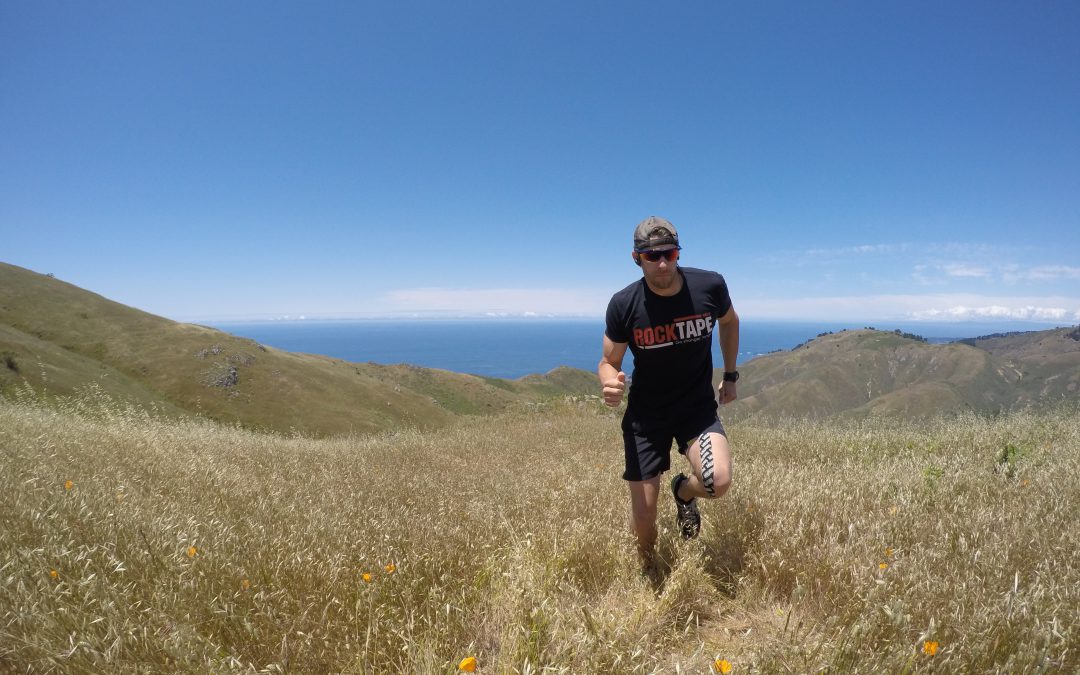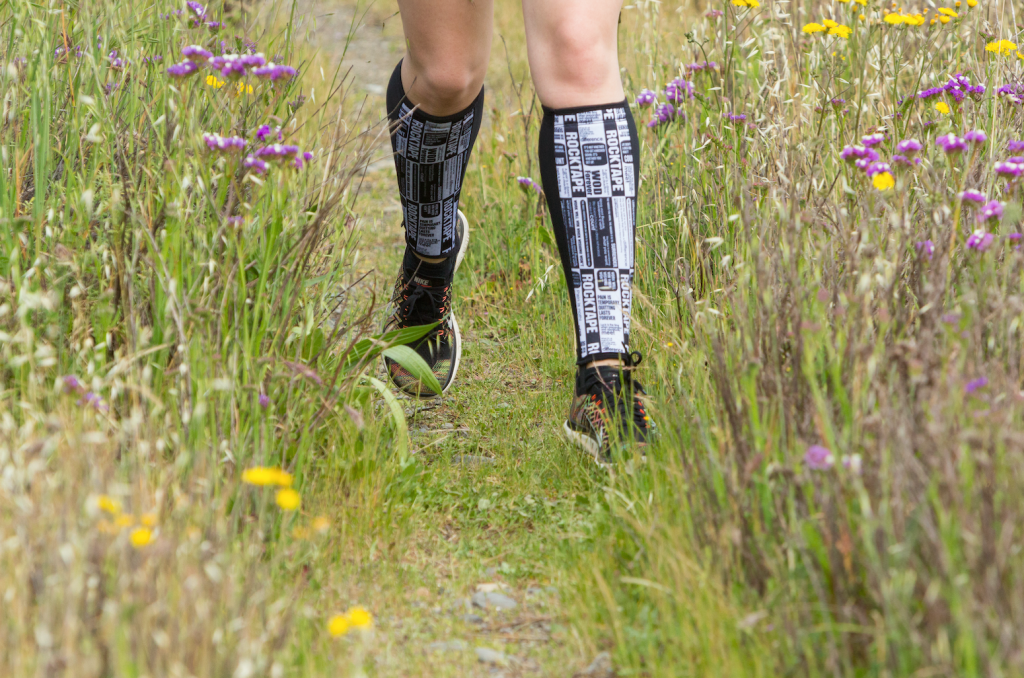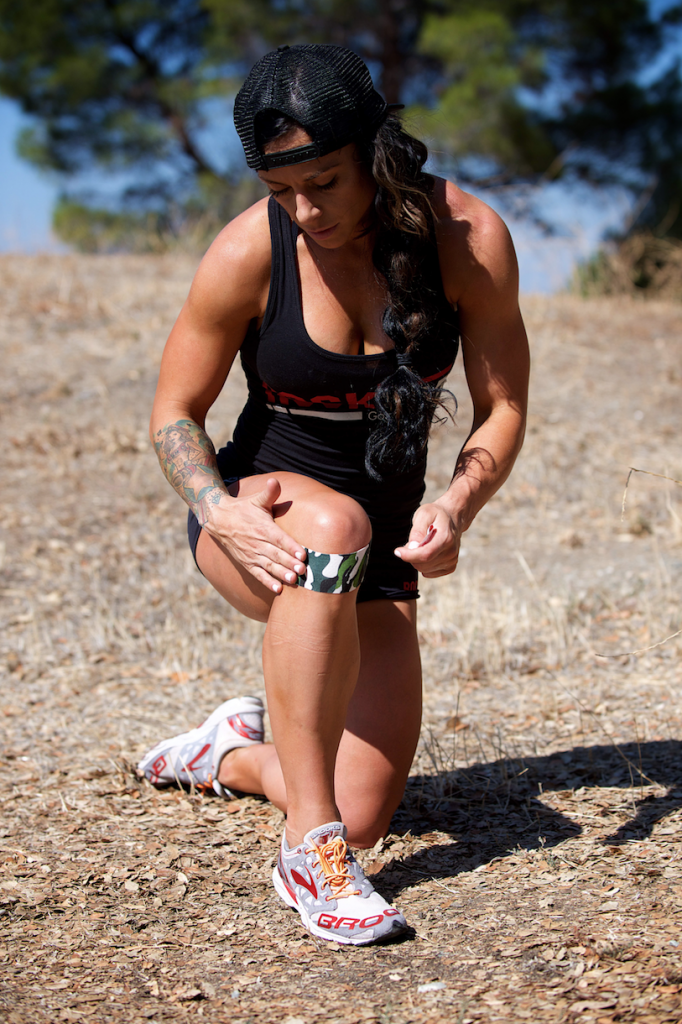Trail running has a ton of benefits for practitioners of the sport, as well as some unique challenges and injuries. Probably the main problem trail runners face is an acute ankle sprain, and taping may help prevent sprains and can certainly be helpful in the aftermath. Of course, trail runners are just as prone to the chronic knee and hip problems other runners face, too. Uneven terrain makes falls more prevalent and gives trail runners a higher need to protect their lower legs, especially, and doing so also helps with those tight single-track sections that may put you in proximity to thorny plants or all our “poisonous” friends like ivy, elm and oak.
Protecting your shins and lower legs from these sorts of plants as well as protecting them from falls or scrabbles over fallen trees, rocks and other obstacles is the domain of RockTape’s excellent RockGuards shin protectors. Originally designed to help CrossFit athletes protect their shins during deadlifts, box jumps and rope climbs, RockGuards were quickly adopted by obstacle course racers and trail runners alike. RockGuards offer a lightly padded, highly protective front side that will take pretty hard impacts from obstacles or falls while running. The back is a breathable mesh that doesn’t hold water, so you’ll stay cooler than you would with a full running pant/tight. RockGuards also have zippers so, depending on your footwear, you may be able to get them on and off over shoes. If not, wearing them for a full run is a heck of a lot better than scratched, bashed shins or running into poison ivy and getting the post-run itch!
When it comes to ankle sprains, RockTape kinesiology tape can be used immediately after the injury to help decrease swelling and also add stability so you feel like walking more, and more naturally. This helps you avoid some of the movement dysfunction that can be associated with this type of injury. Here is RockTape instructor and physical therapist, Stu Wilson, demonstrating how to tape for the swelling and edema that occurs after an ankle sprain. You can use less tape than this, two, but you do want a minimum of two sets of alternating “fingers” crisscrossed over the most swollen area (generally the outside of the ankle for most sprains).
And here is RockTape’s founder, Greg Van Den Dries, demonstrating how to tape your own ankle for more stability in the post-injury rehabilitation phase.
For runners, knee pain usually comes in two varieties: patellar tendinosis and patellofemoral pain. These are two varieties of what amounts to a knee that just plain hurts to run or walk on. Both of them respond quite well to this basic taping application. From a clinical perspective, both issues are somewhat difficult for practitioners to treat and, in this author’s opinion, that is because most practitioners focus on the knee when it is hurting. In fact, the knee is stuck between two of the biggest biomechanical bullies in the body, the foot and the hip. The reason these problems are so troublesome for so many clinicians is that the knee is the victim, screaming out about atrocities being committed by its neighbors further up and down the leg! But, mitigating knee pain during and after activity with this application is well worth it while your provider figures out the cause of the problem and a great solution for it.
Finally, trail running requires a lot of stability, as well as movability over uneven surfaces, and this can beat up the iliotibial band (ITB) just as much as pavement running. IT band pain usually manifests itself as outer knee pain, but it can sometimes be more predominant in the hip area. In both cases, tape one long strip from a few inches below the knee to a couple inches above the hip joint, then apply the smaller decompression strip right over the site of greatest pain. Feel free to use multiple decompression strips when needed.


